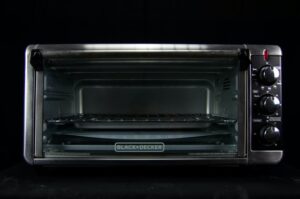
The microwave has become one of the most popular household appliances in the world, but few people are aware that it was designed as a result of the accident.
In 1945, a Raytheon engineer walked past a radar tube and noticed that the candy bar in his pocket had melted.
Seeing this as a possible use for microwaves, he put together an experiment to test the effects of microwaves on food.
He placed six chocolate chip cookies between two closely tuned microwave antennas and cooked them until they started to smoke. The cookies were so hot that he couldn’t eat them, but the experiment was a success.
The first microwave oven was released to the public in 1947 and it took off from there. In the early days, many people were skeptical of the new appliance, but it eventually gained widespread acceptance.
Now, microwaves are found in most homes and restaurants around the world.
How does microwaves work?
Microwaves are electromagnetic waves that have a frequency of 2.45 gigahertz (GHz).
They are generated by a device called a magnetron and they cause water molecules in the food to oscillate rapidly.
This creates heat which cooks the food.
Microwaves are a quick and convenient way to cook food, but there are some things you need to know before using them.
First of all, never put metal in a microwave oven. The metal will create sparks that could cause a fire. Also, be careful not to overcook your food. Overcooked food can be dangerous to eat.
Despite their occasional misuse, microwaves are a safe and convenient way to cook food.
They have come a long way since they were first invented as a result of an accident and are now found in most homes and restaurants around the world.
So the next time you’re in the mood for some popcorn or a quick snack, don’t forget to reach for the microwave.
Courtesy of the Spencer family
What we now know as microwaves were first discovered in 1945 when a Raytheon engineer noticed that his candy bar had melted after walking past a radar tube.
The engineer, Percy Spencer, quickly assembled an experiment to test the effects of microwaves on food.
He placed six chocolate chip cookies between two closely tuned radar antennas and cooked them until they started to smoke.
The result was a batch of burnt cookies, but Spencer had discovered the potential of microwaves for cooking food.
To prove it, he gave some popcorn to the president of Raytheon and within months, Spencer’s “radar range” was being manufactured and sold to the public.
Are microwaves generate radiation?
Microwaves are a form of electromagnetic radiation.
They are generated by a device called a magnetron and they cause water molecules in the food to oscillate rapidly. This creates heat which cooks the food.
Microwaves are a safe and convenient way to cook food.
However, you should never put metal in a microwave oven. The metal will create sparks that could cause a fire.
Also, be careful not to overcook your food. Overcooked food can be dangerous to eat.
Despite their occasional misuse, microwaves are a valuable tool in the kitchen and are found in most homes and restaurants around the world.
So the next time you’re in the mood for some popcorn or a quick snack, don’t forget to reach for the microwave.
Is the microwave safe?

Microwaving Plastics-Covered Food Can Cause Cancer
The use of plastics has increased significantly over the years, with many products now being covered in synthetic material.
While it’s convenient to be able to heat up food in plastic packaging, this can be dangerous as microwaving plastic can release harmful chemicals that can cause cancer.
In particular, polycarbonate is a type of plastic used to make plastic dinnerware, baby bottles and other containers.
However, when heated up in a microwave, this can release BPA (bisphenol A).
Exposure to BPA is linked to breast cancer, prostate cancer and early puberty.
So, what should you do? To be safe, never heat food that’s been wrapped in plastic.
Instead, transfer the food to a glass or ceramic dish before microwaving. If you’re using a takeout container, ask the restaurant if it’s microwave-safe first.
Microwave cooking does not eliminate nutrients, but it can alter them.
Microwave radiation alters the chemical composition of food and this can affect the nutrient content.
In particular, microwaving can destroy some of the vitamins and minerals in food.
For example, research has shown that microwaving can reduce the levels of antioxidants in vegetables.
Antioxidants are important for health as they help protect the body from damage caused by free radicals.
Microwaving also affects the vitamin C content of vegetables, but not as much as other methods such as boiling or steaming. However, microwaving is still bad for your health because it tends to overcook food.
Overcooked food can be dangerous to eat because it can become hard to digest and leave you feeling sluggish.
So, is microwaving bad for you?
In short, yes.
Microwaving can destroy some of the vitamins and minerals in food, as well as affect the antioxidant content. It also tends to overcook food, which can be difficult to digest and make you feel sluggish.
However, if you are careful not to overcook your food, microwaving can be a safe and convenient way to cook your food.
- See also: How did we develop with a COVID-19 immunization so fast
- See also: The history of glass – how glass was invented
It’s all right to put a metal can in a microwave as long as it isn’t thin or sharp
It’s okay to use metal trays when microwaving your food.
Metal trays are designed to withstand heat and won’t crack or melt when heated in a microwave oven.
The issue with cutting thin metals such as foil or the wrapper from a chocolate bar is that they can spark, which may cause damage to the microwave oven itself.
If this happens, the oven may require repair.
This is why it’s recommended to use microwave safe plastic or glass trays instead.
These are designed to withstand high levels of heat and won’t crack when heated in a microwave oven.
The only time you’re likely to face issues with microwaves is if metal objects are left inside the oven after being heated.
For example, if you put a metal fork or spoon into your food before microwaving it, there’s a risk that the utensil may cause damage to the magnetron or circuitry in the oven.
Conclusion
microwave has been with us for more than 50 years. No reports of injuries have ever been documented, even though microwaves are now found in an estimated 90 percent of American homes.
Microwaves are a valuable tool in the kitchen, but they can also be dangerous if not used correctly.
In particular, microwaving plastic can release harmful chemicals that can cause cancer. So, to be safe, never heat food that’s been wrapped in plastic.
Instead, transfer the food to a glass or ceramic dish before microwaving.
If you’re using a takeout container, ask the restaurant if it’s microwave-safe first.
Although microwaving can destroy some of the vitamins and minerals in food, it doesn’t affect nutrient content as much as other cooking methods such as boiling or steaming.
Also, it’s safe to use metal trays when heating food in the microwave, as long as it isn’t thin or sharp.



